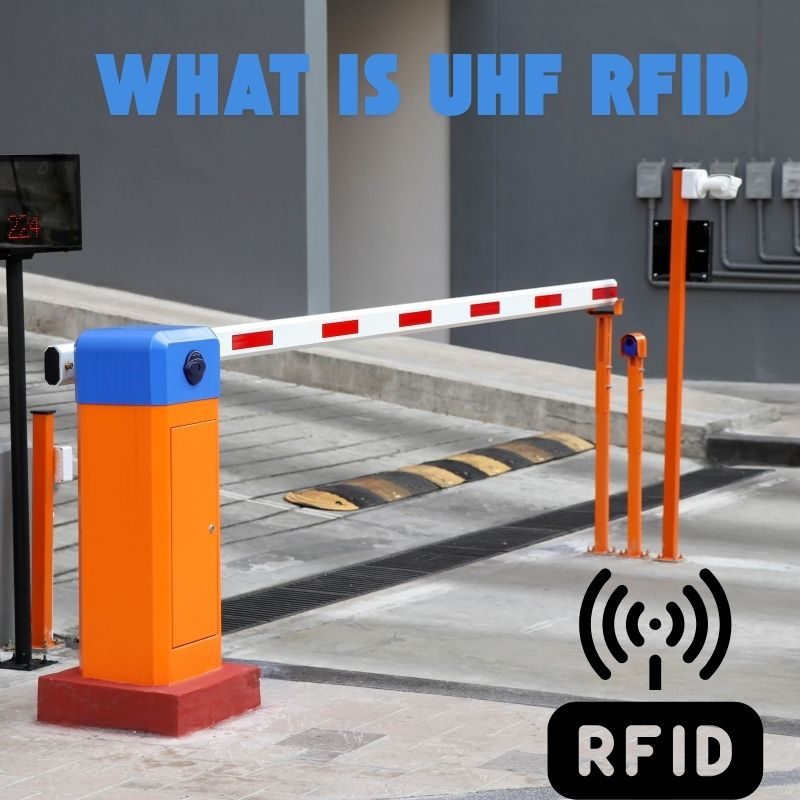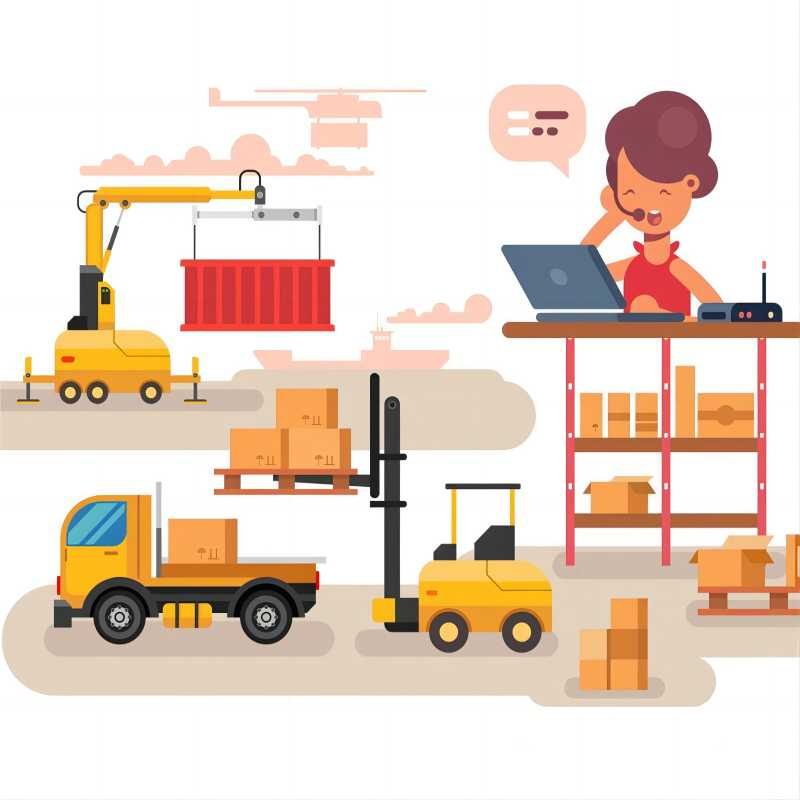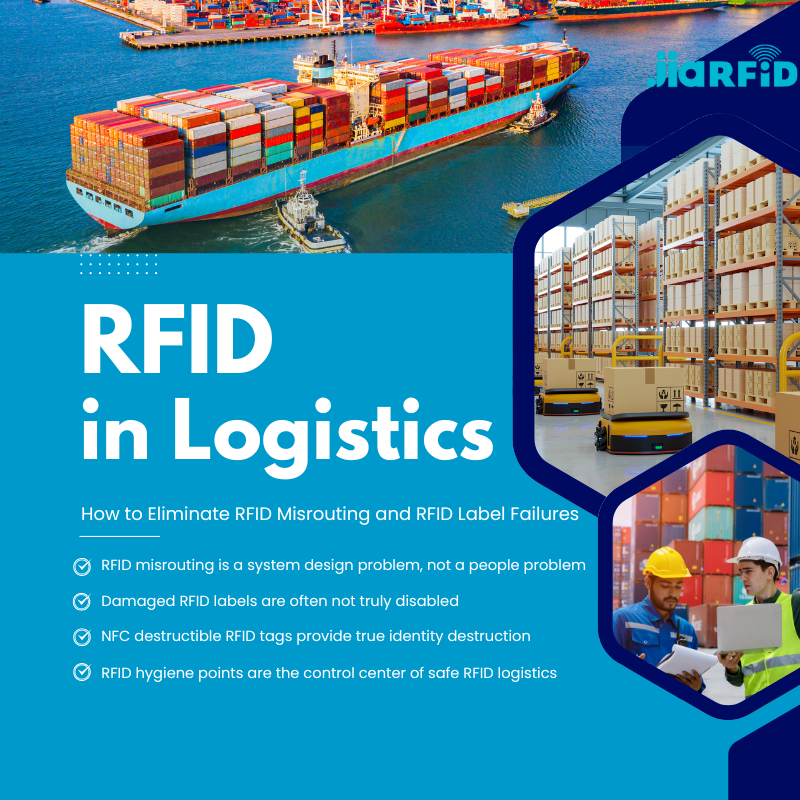
UHF RFID란 무엇인가요?
목차
소개
초고주파 RFID (초고주파 무선 주파수 식별)은 다양한 산업 분야에서 주목받고 있는 첨단 식별 기술입니다. 소매 및 물류부터 의료 및 농업에 이르기까지, 빠르고 비접촉식 데이터 교환을 가능케 하는 이 기술은 비즈니스 운영 방식을 혁신하고 있습니다.
RFID를 처음 접하는 분이든, 이해를 깊게 하고자 하는 분이든, 이 가이드가 여러분을 안내해 드릴 것입니다. 초고주파 RFID 그것이 무엇인지, 어떻게 작동하는지, 그 응용 분야, 그리고 2025년에 반드시 알아야 할 기술인 이유입니다.

UHF RFID란 무엇인가요?
UHF RFID(초고주파 무선 주파수 식별)는 물체에 부착된 태그를 식별하고 추적하기 위해 전파를 사용하는 무선 통신 기술입니다. 이는 RFID 기술의 세 가지 주요 주파수 범주 중 하나이며, 나머지 두 가지는 저주파(LF)와 고주파(HF)입니다.
UHF는 일반적으로 860MHz에서 960MHz 범위 내에서 작동하며 다음과 같은 특징으로 잘 알려져 있습니다:
- 더 긴 판독 거리(최대 12미터 이상)
- 더 빠른 데이터 전송
- 대량 읽기 기능
간단히 말해, UHF RFID는 디지털 “강화된 바코드'와 같습니다. 시야가 필요하지 않으며 수백 개의 품목을 즉시 읽을 수 있습니다.
UHF RFID는 어떻게 작동하나요?
UHF RFID의 작동 방식을 이해하기 위해 핵심 구성 요소를 살펴보겠습니다:
- RFID 태그: 데이터를 저장하는 마이크로칩과 안테나를 포함한다.
- RFID 리더기: 무선 전파를 방출하고 태그로부터 데이터를 수신한다.
- 안테나: 태그와 리더기 사이의 신호를 증폭하십시오.
- 미들웨어/소프트웨어: 수집된 데이터를 처리하고 관리합니다.
주로 두 가지 유형이 있습니다. UHF RFID 태그:
- 수동형 UHF 태그: 독자의 신호에서 나오는 에너지를 이용합니다; 더 저렴하고 일반적으로 사용됩니다.
- 능동형 UHF 태그: 배터리 구동식; 장거리 및 실시간 애플리케이션에 적합합니다.
주요 기능:
- 리더기는 UHF 대역에서 신호를 방출합니다.
- 태그는 에너지를 수신하고 전원이 켜지며 데이터를 다시 전송합니다.
- 리더기는 이 데이터를 수집하여 처리하기 위해 백엔드 시스템으로 전송합니다.
이 시스템은 고속에서도 여러 태그를 동시에 읽을 수 있어, UHF RFID가 컨베이어 벨트나 빠르게 이동하는 재고와 같은 동적 환경에 이상적입니다.
UHF RFID 기술의 장점
UHF RFID가 왜 이렇게 주목받고 있을까요? 현실 세계의 추적 및 자동화 과제를 해결하기 때문입니다. 주요 장점은 다음과 같습니다:
- 긴 읽기 범위: 최대 12미터, 험한 환경에서도
- 대량 읽기: 수백 개의 태그를 몇 초 만에 읽어 들이기
- 비용 효율적입니다: 패시브 태그는 대규모 사용에 적합한 가격이다
- 실시간 가시성: 재고 및 자산 이동에 대한 실시간 업데이트
- 비시야(Non-Line-of-Sight): 바코드처럼 직접 스캔할 필요 없음
- 확장성: 소규모 운영이나 글로벌 공급망에 적합합니다
요컨대, 이는 효율성, 정확성 및 자동화를 향상시키며, 이는 현대 비즈니스의 핵심 요소들입니다.
UHF RFID의 일반적인 응용 분야
UHF RFID는 탁월한 범위, 속도 및 다용도성을 제공하며 현대 자동화 및 추적 시스템의 핵심 기술로 부상했습니다. 수백 개의 태그를 동시에 장거리에서 읽을 수 있는 능력 덕분에 다양한 산업 분야에서 매우 중요한 역할을 합니다.
소매
- 재고 관리
- 도난 방지 시스템
- 자동 결제
- 실시간 재고 업데이트
물류 및 공급망
- 배송 추적
- 팔레트 관리
- 크로스 도킹 작업
- 배송 확인서
조작
- 진행 중인 작업(WIP) 추적
- 품질 관리
- 장비 모니터링
헬스케어
- 환자 손목 밴드
- 장비 추적
- 의약품 재고
농업
- 가축 모니터링
- 농기계 추적
- 스마트 관개 시스템
도서관 및 교육
- 도서 추적
- 실험실 자산 관리
- 접근 제어
어떤 산업이든 UHF RFID는 실시간 가시성, 효율성 및 추적성을 제공합니다.
UHF RFID 대 HF 및 LF RFID – 주요 차이점
| 특징 | LF(저주파) | HF(고주파) | UHF(초고주파) |
|---|---|---|---|
| 빈도 | 125-134kHz | 13.56MHz (13.56MHz) | 860-960MHz |
| 읽기 범위 | ~10cm | ~1 m | 최대 12m |
| 데이터 속도 | 느린 | 보통의 | 빠른 |
| 비용 | 낮은 | 보통의 | 다양 |
| 사용 사례 | 동물 추적 | 비접촉 결제 | 공급망, 소매, 물류 |
UHF RFID는 가장 긴 판독 거리와 가장 빠른 성능을 제공하여 빠르게 변화하는 환경과 대량 추적에 이상적입니다.
초고주파(UHF) RFID 표준 및 규정
표준은 호환성을 보장하기 위해 UHF RFID의 글로벌 사용을 규율합니다:
- EPCglobal Gen2 / ISO 18000-6C: 수동형 UHF RFID 산업 표준
- FCC (미국): 902–928 MHz 대역에서 작동합니다
- ETSI (유럽): 865–868 MHz 대역에서 작동합니다
- 기타 지역: 통신 규정에 따라 약간 다를 수 있습니다
전 세계적으로 UHF RFID를 배포할 때는 지역별 주파수 규정을 준수하는 것이 매우 중요합니다.
UHF RFID 태그의 종류
수동형 UHF RFID 태그
- 가장 흔한
- 비용 효율적
- 소매, 물류 등에 사용됨.
능동형 UHF RFID 태그
- 배터리 구동
- 더 긴 범위
- 고가 자산 추적에 사용됨
반수동형(BAP) 태그
- 배터리 보조 기능으로 향상된 성능
태그 폼 팩터
- 인레이
- 라벨
- 하드 태그
- 금속 또는 가혹한 환경용 내구성 강화 태그
환경, 범위 요구사항 및 예산에 따라 태그 유형을 선택하십시오.
UHF RFID의 과제와 한계
다른 기술과 마찬가지로 UHF RFID도 완벽하지 않습니다. 고려해야 할 사항은 다음과 같습니다:
- 금속과 액체의 간섭: 신호를 차단하거나 왜곡할 수 있음
- 환경적 요인: 극한 온도는 성능에 영향을 미칠 수 있습니다
- 시야 제한: 밀집된 스택의 태그는 안정적으로 읽히지 않을 수 있습니다
- 선불 비용: 인프라 구축은 비용이 많이 들 수 있습니다
- 데이터 과부하: 대규모 데이터 수집을 처리하기 위한 강력한 소프트웨어가 필요합니다.
그러나 신중한 계획을 통해 이러한 제한 사항들은 최소화되거나 완전히 완화될 수 있습니다.

UHF RFID의 미래 동향 (2025년 이후 전망)
UHF RFID는 단순히 계속 사용될 뿐 아니라 빠르게 진화하고 있습니다. 주요 트렌드는 다음과 같습니다:
- IoT와의 통합: 스마트 센서 + RFID = 강력한 데이터 인사이트
- 클라우드 기반 RFID 시스템: 어디서나 태그 관리하기
- 인공지능 및 머신러닝: RFID 데이터를 활용한 예측 분석
- 스마트 도시 및 인프라: 교통 흐름, 폐기물 관리 등
- 산업 4.0: 실시간 공장 자동화 및 디지털 트윈
비용 절감과 성능 향상으로 인해, 10년 말까지 산업 전반에 걸쳐 대량 채택이 이루어질 것으로 예상됩니다.
UHF RFID가 귀사에 적합한가요?
UHF RFID는 강력한 확장성을 갖춘 기술로, 수동 프로세스 감소, 손실 절감, 가시성 향상에 기여합니다. 창고 관리부터 고가 의료 기기 추적에 이르기까지, 장거리 고속 데이터 캡처의 이점은 판도를 바꾸는 혁신입니다.
그러나 모든 기술과 마찬가지로, 성공은 그 강점을 이해하고 올바르게 활용하는 데 달려 있다.
귀사의 비즈니스를 위한 UHF RFID를 탐색할 준비가 되셨나요? 전문가와 상담을 시작하세요. 신뢰할 수 있는 RFID 솔루션 제공업체 또는 시범 프로그램을 운영하여 귀사의 요구 사항을 평가합니다.
UHF RFID 기술에 대한 FAQ
UHF RFID는 무엇을 의미합니까?
UHF RFID는 초고주파 무선 주파수 식별(Ultra-High Frequency Radio Frequency Identification)을 의미합니다. 이는 860~960MHz 주파수 대역에서 작동하며 수 미터 거리에서 태그를 읽을 수 있는 RFID 시스템을 가리킵니다.
UHF RFID는 어떻게 작동하나요?
UHF RFID 시스템은 리더기와 태그 간 통신에 전파를 사용합니다. 리더기가 신호를 발신하여 수동형 태그에 전원을 공급하면, 태그는 데이터를 리더기로 다시 전송합니다. 이를 통해 직접적인 시야 확보 없이도 물체를 신속하게 무선으로 식별할 수 있습니다.
UHF RFID 시스템의 범위는 얼마입니까?
UHF RFID 시스템은 일반적으로 수동형 태그의 경우 3~12미터(10~40피트)의 판독 범위를 가집니다. 배터리가 장착된 능동형 태그는 범위를 크게 확장할 수 있으며, 때로는 100미터 이상까지 도달할 수 있습니다.

레이 저우
이 글은 업계에서 10년 이상의 경력을 쌓은 RFID 기술 전문가인 Ray Zhou가 작성했습니다.
댓글
인기상품

물류에서의 RFID: RFID 오경로 및 RFID 라벨 오류를 제거하는 방법
물류 분야의 RFID는 단순히 프로세스 가속화를 위한 도구를 넘어, 현대 공급망 운영 방식의 핵심 요소로 자리매김했습니다.

RFID 기반 폐기물 관리란 무엇인가
모든 쓰레기통이 말을 하는 도시를 상상해 보세요. 말 그대로가 아니라, 작은 칩을 통해 시스템에 쓰레기통이 가득 찼을 때, 비워졌을 때, 그리고 어디로 이동했는지를 알려주는 것입니다. 이것이 바로 오늘날 RFID 폐기물 관리가 수행하는 역할입니다.

볼트 씰이란 무엇이며 어떤 용도로 사용되나요? | 전체 가이드
글로벌 무역 및 물류에서 볼트 씰은 화물의 보안과 규정 준수에 중요한 역할을 합니다. 이 작지만 강력한 장치는 운송 컨테이너, 트레일러 및 화물 도어를 변조 방지 메커니즘으로 잠그도록 설계되었습니다.

RFID 카드 프로텍터란 무엇인가요? 장점, 사용 사례 및 구매 가이드
RFID(무선 주파수 식별) 기술은 신용카드, 신분증, 대중교통 패스, 호텔 객실 열쇠 등 어디에나 있습니다. 이 기술은 속도와 편리함을 제공하지만 "스키밍"이라는 새로운 종류의 디지털 도난에 대한 문을 열어주기도 합니다. 이것이 바로 RFID 카드 프로텍터가 필요한 이유입니다.

이벤트용 RFID 손목 밴드: 주최자를 위한 대량 구매 가이드
이벤트용 RFID 손목 밴드는 콘서트, 축제, 스포츠 경기장에서 더 빠른 입장, 사기 방지, 현금 없는 결제가 필요한 주최자가 선호하는 솔루션으로 자리 잡고 있습니다. 종이 티켓이나 QR코드와 달리 이러한 스마트 손목 밴드는 내장된 칩을 사용하여 액세스를 간소화하고 거래를 보호하며 게스트 경험을 개선합니다.

윈드스크린의 RFID 태그가 차량 출입 통제 및 통행료 시스템을 개선하는 방법
오늘날과 같이 빠르게 변화하는 세상에서는 차량 식별이 빠르고 안전하며 비접촉식으로 이루어져야 합니다. 윈드스크린의 RFID 태그는 차량을 정차하지 않고도 통행료 징수, 주차, 게이트 출입을 관리할 수 있는 안정적인 방법을 제공합니다.
태그
관련 블로그

물류에서의 RFID: RFID 오경로 및 RFID 라벨 오류를 제거하는 방법
물류 분야의 RFID는 단순히 프로세스 가속화를 위한 도구를 넘어, 현대 공급망 운영 방식의 핵심 요소로 자리매김했습니다.

RFID 기반 폐기물 관리란 무엇인가
모든 쓰레기통이 말을 하는 도시를 상상해 보세요. 말 그대로가 아니라, 작은 칩을 통해 시스템에 쓰레기통이 가득 찼을 때, 비워졌을 때, 그리고 어디로 이동했는지를 알려주는 것입니다. 이것이 바로 오늘날 RFID 폐기물 관리가 수행하는 역할입니다.

볼트 씰이란 무엇이며 어떤 용도로 사용되나요? | 전체 가이드
글로벌 무역 및 물류에서 볼트 씰은 화물의 보안과 규정 준수에 중요한 역할을 합니다. 이 작지만 강력한 장치는 운송 컨테이너, 트레일러 및 화물 도어를 변조 방지 메커니즘으로 잠그도록 설계되었습니다.




